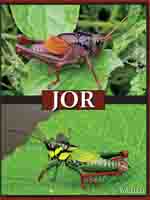We reared Oriental Migratory Locusts, Locusta migratoria manilensis (Meyen) in the laboratory from 3rd instar until adult death, at five constant temperatures (18, 21, 24, 27 and 30°C), and recorded life history variables. Temperature strongly influenced growth, development and behaviors. Growth and development rates were both positive linear functions of temperature, with low thermal thresholds for nymphal growth ( 15°C) and development (13°C). There was no mating at 18°C and no oviposition at 21 °C and below. Rearing temperature did not significantly influence mass at adult molt, except for the 18°C-nymphs who molted to adults with significantly smaller mass. Females laid their first egg pod significantly later at 24°C than at 30°C. There were strong but nonsignificant trends for low-temperature females to die earlier and lay fewer and lighter egg pods; 24°C-females averaged less than half the dry lifetime egg mass as 30°C-females. Our results show that L. m. manilensis is a warm-climate species, and explain its current range and phenology in China. Knowledge of the thermal physiology and thermal ecology of L. m. manilensis will aid in its control and in predicting future outbreaks.
How to translate text using browser tools
1 October 2012
Growth, Development and Daily Change in Body Weight of Locusta migratoria manilensis (Orthoptera: Acrididae) Nymphs at Different Temperatures
Xiongbing Tu,
Zehua Zhang,
Dan L. Johnson,
Guangchun Cao,
Zhihong Li,
Song Gao,
Xiangqun Nong,
Guangjun Wang





